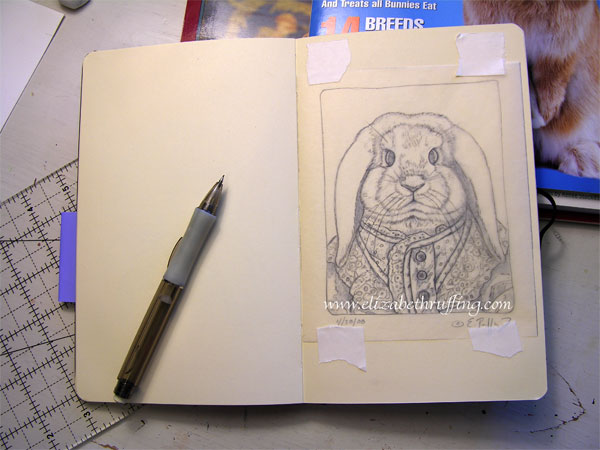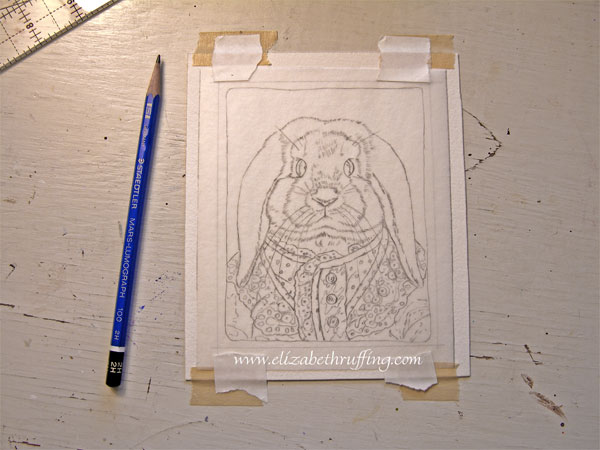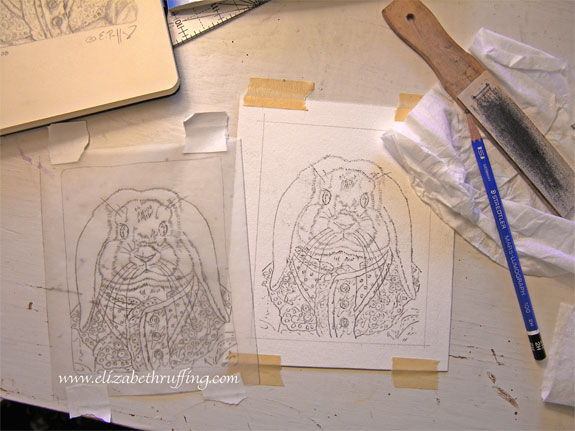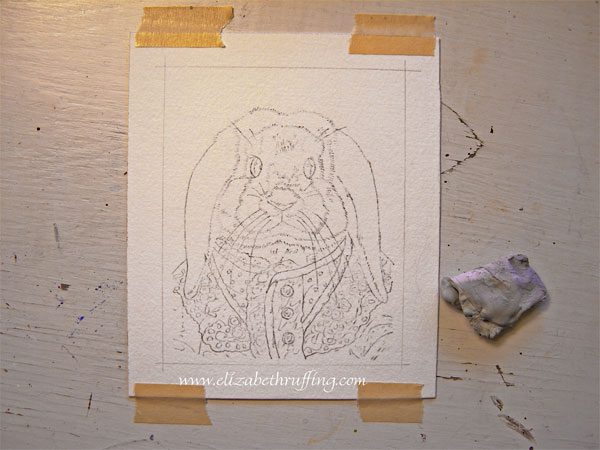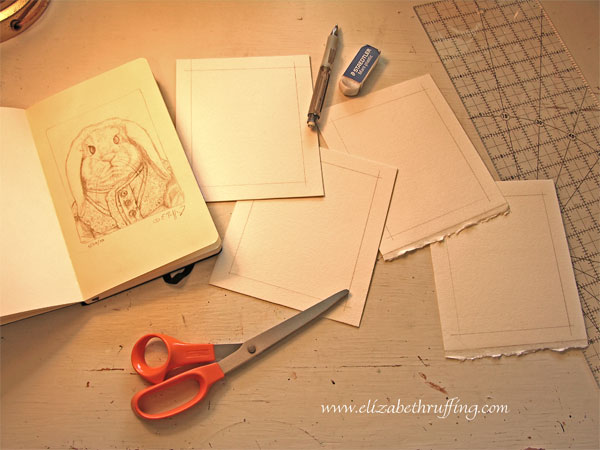 I got my masking done on my little watercolor. Masking at its best is still like painting with thin rubber cement, and here I was trying to “paint” a lace collar with masking fluid, which was quite difficult. I can do this, I know, but I may take a departure here. The handout on the Claybord I recently bought says you can scratch the surface with a wire brush to make hairs. I might experiment and see if there is a way to scratch lace onto it. I think it might make an interesting effect, if it works.
I got my masking done on my little watercolor. Masking at its best is still like painting with thin rubber cement, and here I was trying to “paint” a lace collar with masking fluid, which was quite difficult. I can do this, I know, but I may take a departure here. The handout on the Claybord I recently bought says you can scratch the surface with a wire brush to make hairs. I might experiment and see if there is a way to scratch lace onto it. I think it might make an interesting effect, if it works.
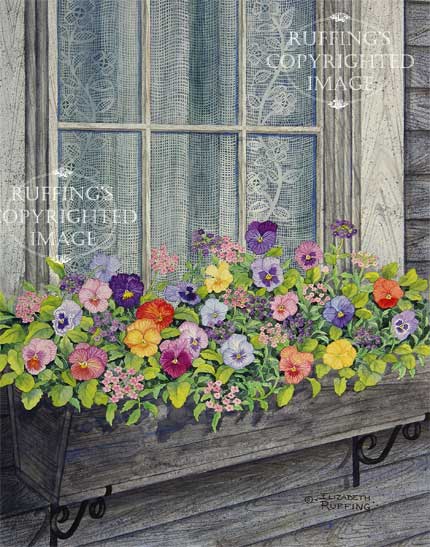 In “Window Box with Pansies“, above, I used masking fluid to paint the lace. Then I painted the watercolor over it. The masking was removed with some dried rubber cement. You can make your own eraser out of rubber cement by pouring some into a cap and letting it dry. You pry it out when it’s dry and wad it up into a ball. It works very well for removing masking fluid. You press and lift, and the masking fluid comes up with it.
In “Window Box with Pansies“, above, I used masking fluid to paint the lace. Then I painted the watercolor over it. The masking was removed with some dried rubber cement. You can make your own eraser out of rubber cement by pouring some into a cap and letting it dry. You pry it out when it’s dry and wad it up into a ball. It works very well for removing masking fluid. You press and lift, and the masking fluid comes up with it.
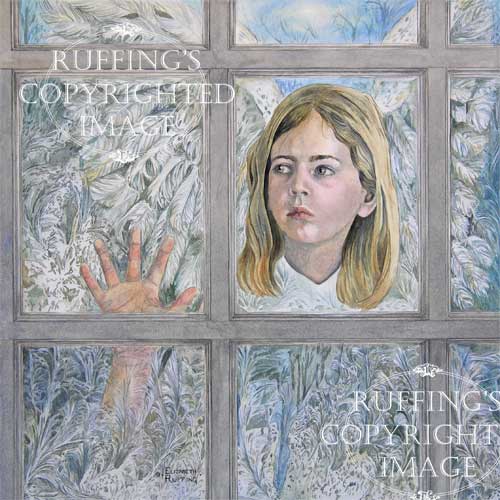 “The Frost Angel“, above, was done without masking, by working “dry brush” in sections. This means the whole background wasn’t wet to begin with. You work on dry paper. This gives you more control, but it isn’t feasible in some situations, like when you want a larger, fluid, or blended background, as you would with a sky. The masking fluid protects areas where you can’t stop to control everything. Also, working out the details and having to be conscious of where you are going in a painting like “The Frost Angel” is like being lost in a maze sometimes. You have to remember what you want to be light and dark at all times, and not mix them up.
“The Frost Angel“, above, was done without masking, by working “dry brush” in sections. This means the whole background wasn’t wet to begin with. You work on dry paper. This gives you more control, but it isn’t feasible in some situations, like when you want a larger, fluid, or blended background, as you would with a sky. The masking fluid protects areas where you can’t stop to control everything. Also, working out the details and having to be conscious of where you are going in a painting like “The Frost Angel” is like being lost in a maze sometimes. You have to remember what you want to be light and dark at all times, and not mix them up.

